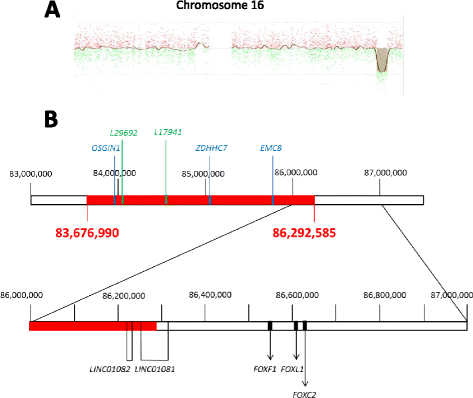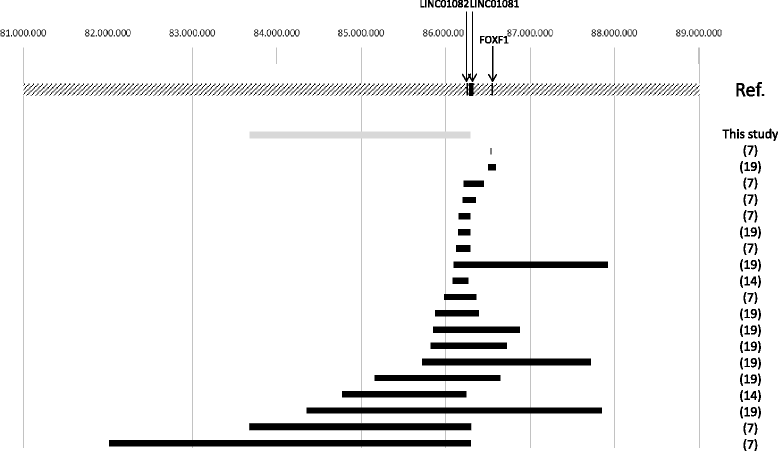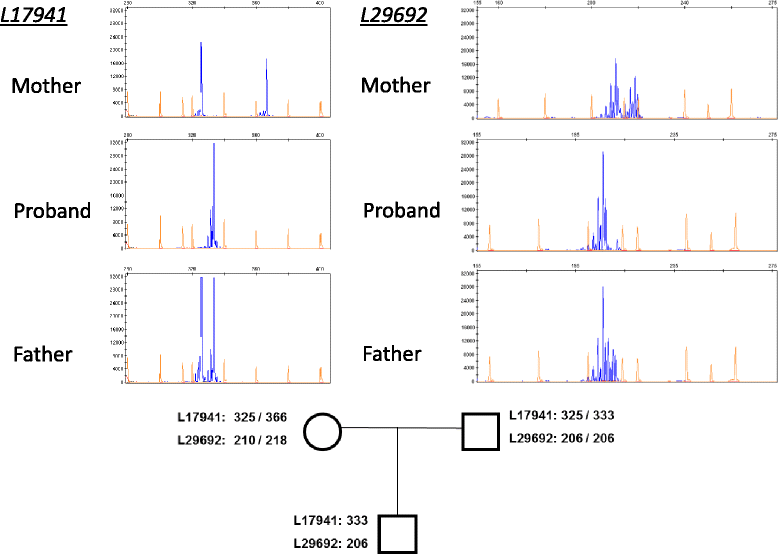A 16q deletion involving FOXF1 enhancer is associated to pulmonary capillary hemangiomatosis
- PMID: 26462560
- PMCID: PMC4605103
- DOI: 10.1186/s12881-015-0241-7
A 16q deletion involving FOXF1 enhancer is associated to pulmonary capillary hemangiomatosis
Abstract
Background: Pulmonary capillary hemangiomatosis (PCH) is an uncommon pulmonary disorder, with variable clinical features depending on which lung structure is affected, and it is usually linked to pulmonary arterial hypertension. Congenital PCH has been very rarely described and, so far, the only causative gene identified is EIF2AK4, which encodes for a translation initiation factor. However, not all PCH cases might carry a mutation in this gene.
Case presentation: We report the clinical and cytogenetic characterization of a patient (male, newborn, first child of healthy non-consanguineous parents) died after three days of life with severe neonatal pulmonary hypertension, due to diffuse capillary hemangiomatosis diagnosed post mortem. Conventional karyotyping, Microarray-Based Comparative Genomic Hydridization (CGHa) and quantitative PCR were performed. CGHa revealed a heterozygous chromosome 16q23.3q24.1 interstitial deletion, spanning about 2.6 Mb and involving a FOXF1 gene enhancer. Quantitative PCR showed that the proband's deletion was de novo. Microsatellite analysis demonstrate that the deletion occurred in the maternal chromosome 16.
Conclusion: FOXF1 loss of function mutation have been so far identified in alveolar capillary dysplasia with misalignment of pulmonary veins (ACD/MPV), a lung disease different from PCH. Our data suggest the hypothesis that disruption of the FOXF1 gene enhancer could be a genetic determinant of PCH. Moreover, our findings support the idea that FOXF1 is a paternally imprinted gene.
Figures




References
Publication types
MeSH terms
Substances
LinkOut - more resources
Full Text Sources
Other Literature Sources
Medical
Miscellaneous

